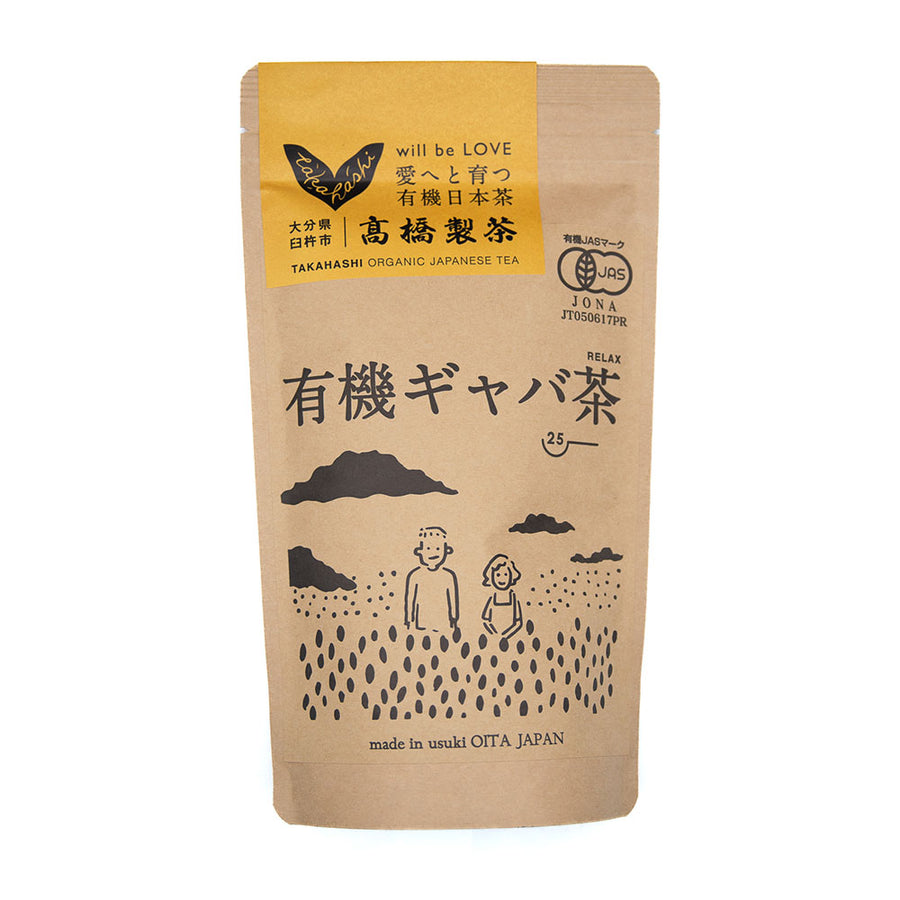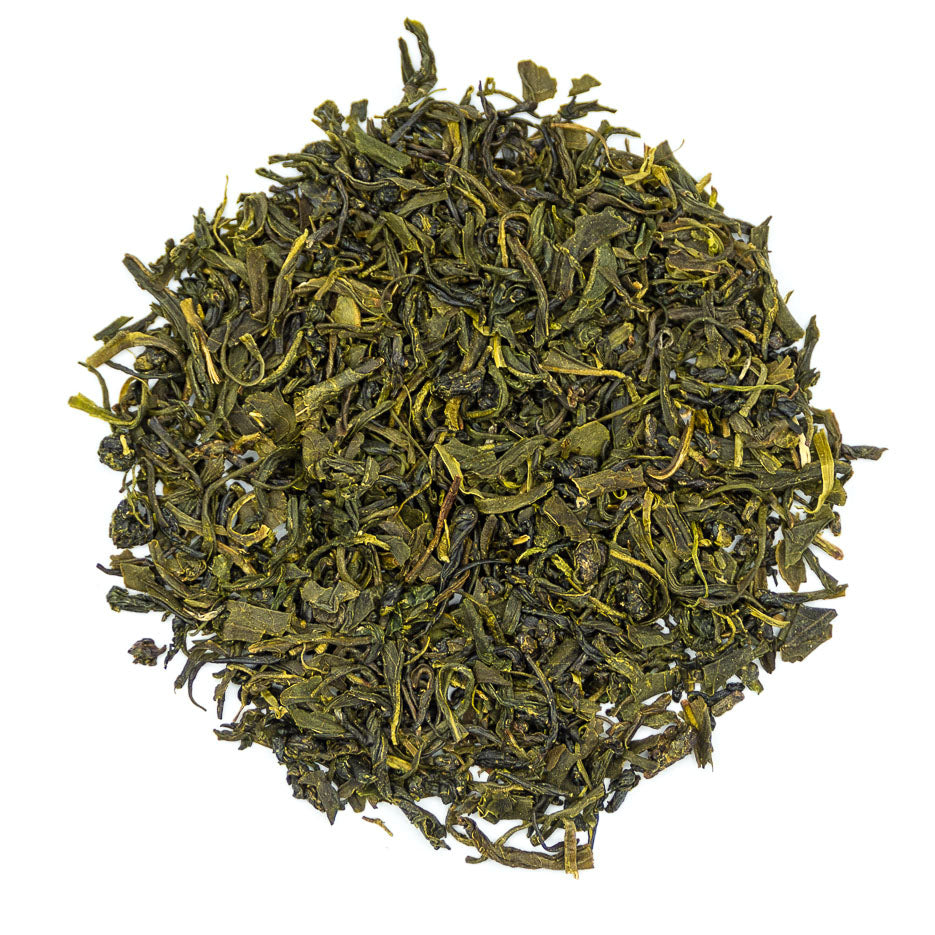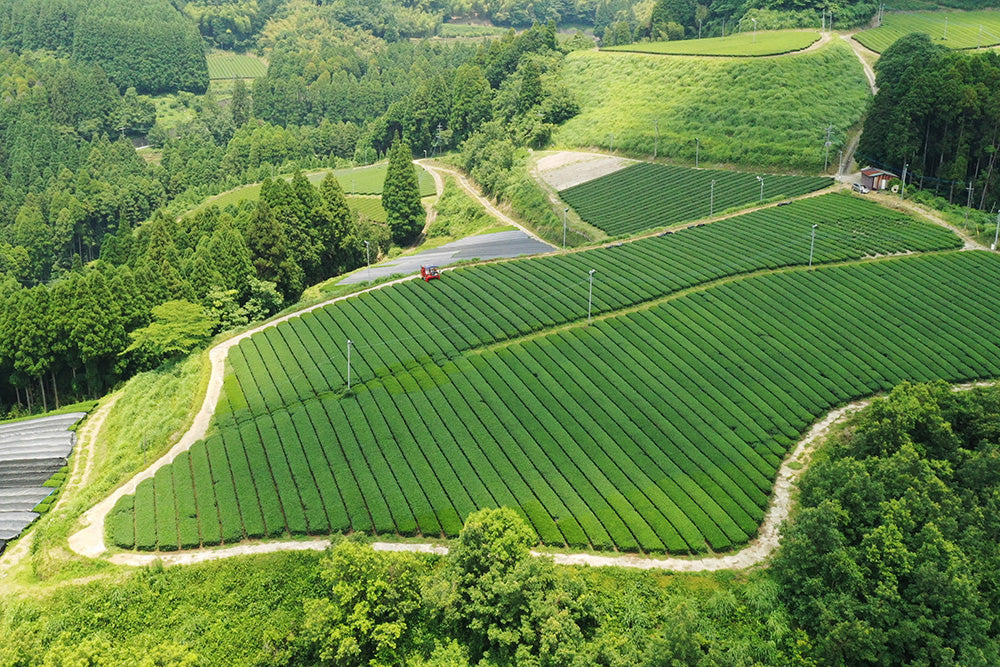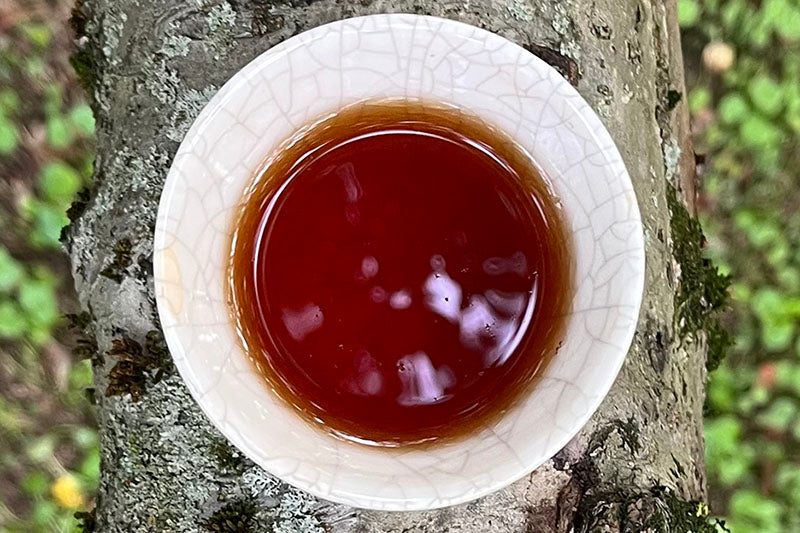KOHEI: TEA TASTING BY ALEX AHEARN
Name of the Product: KOHEI
Type of Tea: Organic GABA
Tea Producer: Takahashi Yuzo, second generation Takahashi Tea Co.
Location: Usuki City, Oita Prefecture, eastern Kyushu, Japan
Harvest: May 2022
Read About The Takahashi Family Business Below.
Takahashi-san’s family has been producing green tea since 1963 on the family tea farm in Usuki City, and the farm was the first organic JAS-certified farm in the Oita prefecture. Takahashi-san runs and operates the family business together with his mother. He also specializes in making tamaryokucha and grows seven tea cultivars on the farm.

Kohei dry curly leaves, typical of tamaryokucha.
Taste This Tea Like Takahashi-San !
Takahashi-san’s recommended steeping parameters.
Temperature: 70-80°C (158-176°F)
Water: 70ml (~2.36 fl oz) vessel
Tea: 2g (~1 teaspoon)
Brewing: 45-60 seconds
KOHEI was processed in a way in which Takahashi-san increased the levels of a natural component of tea known as GABA, or gamma-aminobutyric acid. GABA and its relationship to tea have been studied for many years. GABA-rich teas are usually produced in Japan and Taiwan and are processed under anaerobic, oxygen-free conditions.
Upon opening the bag, a sweet aroma escaped the bag. The air was filled with scents reminiscent of buttered peas and sweet rice mochi with subtle hints of roasted sweet potato (yakiimo) and butter lettuce. I poured a small amount of the tea into a bowl and examined the slightly curled, deep green leaves and inhaled the aroma.
The tea still smelled sweet and had a noticeable fruit-forward aroma, almost like strawberry daifuku mochi, with subtle vegetal undertones. I weighed out 2 grams of tea as my water heated to 70°C (158°F). I filled my shiboridashi and cups with the warmed water. I poured the water out and gently put the dry leaves into the vessel and closed the lid. I lifted the lid slightly to smell the tea’s aroma in the warmed vessel. The tea’s more vegetal characteristics were more distinct, and notes of fresh spring vegetables and sautéed leafy greens wafted from the vessel.

Kohei dry leaves, first and second steep (photo © Alex Ahearn)
I poured 70ml (~2.36 fl oz) of water into the vessel and watched as the tea leaves started to swell and the water became a pale green. I decanted the tea into my cups and looked at the shiny pale green liquor with hints of light yellow. I lifted the lid of the vessel and smelled the warm, wet leaves. This time the aroma was rich with notes of sweet corn.
I smiled and lifted the cup to my lips, letting the delicate liquor pass my lips. A light-bodied liquor filled my mouth and coated my tongue. It had a sweet and soft taste that lingered in my mouth. Underneath the sweetness of the tea, there were notes of pine nuts, soy milk, and fresh zucchini. I lifted the warmed, emptied cup to my nose and inhaled the slightly floral and fruity aroma, like candied citrus peel.

Enjoying Kohei in a cup made by Nakazato Hanako! The colors matched so well :)
I followed the same steps to make another steep and poured water onto the leaves for another time. I waited patiently as the tea steeped and poured the tea into my cup. I noticed that the liquor was slightly darker and a medium green-yellow liquor with hints of pale gold. The tea had a more pervasive sweet finish that lingered in my mouth with more present vegetal characteristics.
I steeped the tea another two times and enjoyed the tea's lingering finish and subtle floral characteristics that were carried by vegetal undertones. Takahashi-san’s steeping parameters accentuate the tea’s vibrant, light-bodied liquor, showcasing its unique processing. This tea is made with the Yutakamidori, Yamanami, Okuyutaka, and Okumidori cultivars.

Even better... with a matcha biscuit!
Make This Tea For Any Occasion!
Hot Preparation:
If you would like to enjoy this tea in a larger quantity, you may use 4 grams (1 teaspoon) of tea and 150-160ml (~5-5.4 fl. oz) of water. The steeping times and water temperature can remain the same. This tea is also enjoyable when prepared in a larger quantity, and you may steep the tea at least four times.
Cold Brew Preparation:
This tea can be enjoyed as a cold brew made in a 750ml (~25.4 fl oz) cold brew bottle or a pitcher. This preparation method highlights the tea’s more aromatic characteristics and underlying complexity. Put 8-10g (2-3 teaspoons) of tea in the bottom of the bottle. Fill the bottle to the top with cold or room temperature filtered water. Place the bottle in the refrigerator and allow the tea to steep for 8-12 hours. You can taste test the tea throughout its steeping and enjoy it at any point to your liking. After the desired amount of time has passed, strain and enjoy the tea. Store in refrigerator up to one day after preparing.
Food Pairing Recommendations:
You may enjoy this tea by itself or pair it with mochi or fresh fruit like strawberries, cantaloupe, or honeydew melon. This tea would also pair nicely with desserts like a fruit tart or vanilla meringue.


We love Takahashi-san's bag designed by a local artist and featuring himself and his mom! A true family business.









Leave a comment